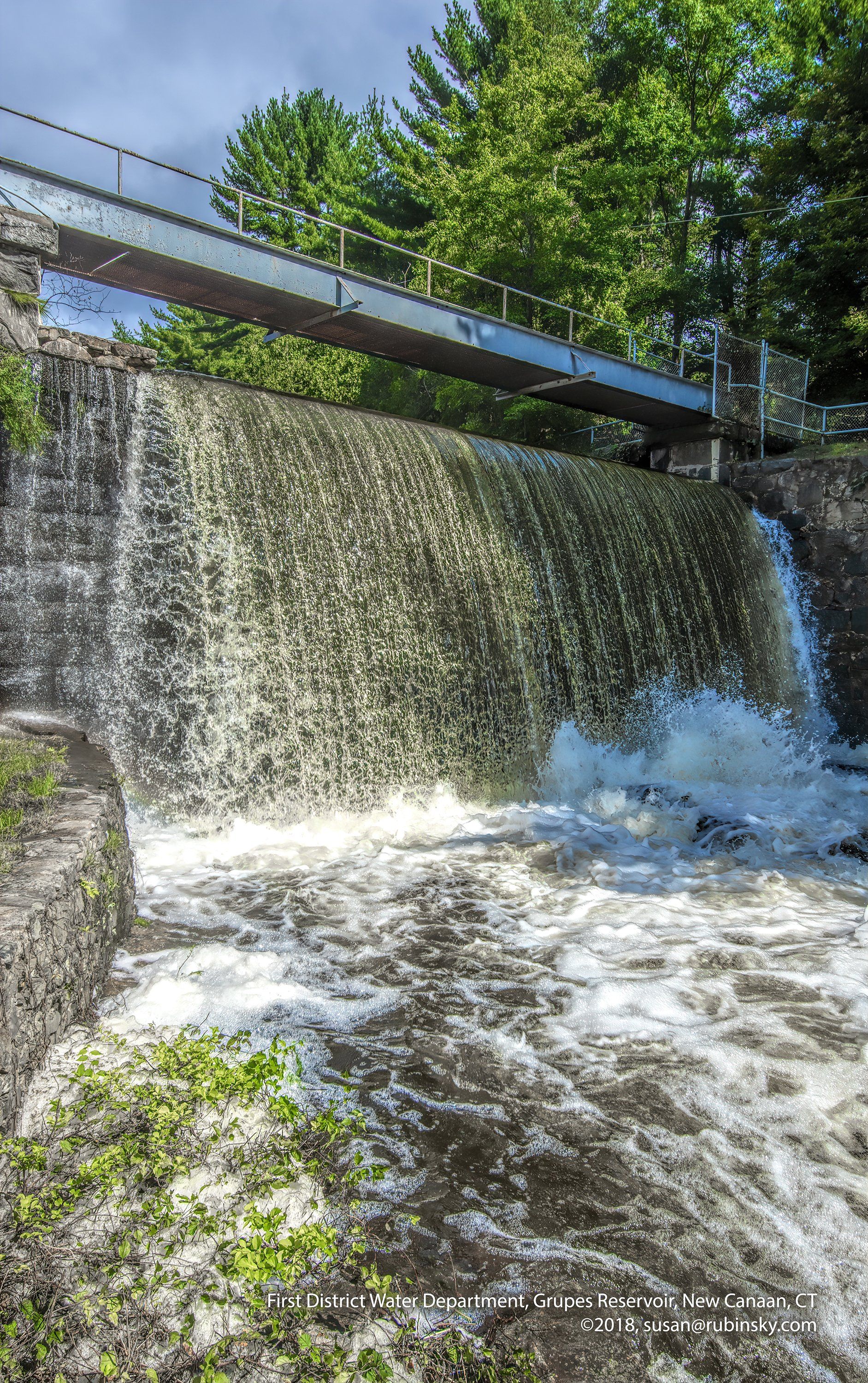Report an Emergency: 203-847-7387
2014 Water Quality Report
Letter to Our Customers
Dear Customer:
Frank N. Zullo, Esq. ChairmanCommissioners, First Taxing District
2014 Water Sampling
Footnotes
Acronyms and Definitions
Compound Sources
Request
More Information
About Our Water
How Our Water Is Treated and Purified

Water Quality & Sustainability
Water Sources and How We Protect Them
Protecting the water supply at its source is the first step in achieving the water department’s goal of providing safe drinking water to its customers.
The District’s reservoirs, located in Lewisboro, NY and New Canaan, CT, hold approximately one billion gallons of water. The source of the water is the watershed land covering 10 square miles in New Canaan, Ridgefield and Wilton, CT and Lewisboro, NY. Rainfall and snowmelt from this land are channeled into soils, groundwater, creeks and streams and then into our reservoirs. Disturbance or pollution on watershed land can directly affect the drinking water reservoirs.
Measures to protect the watershed land and reservoirs include daily patrolling of the area. Open communications with both the local police and fire departments in our watershed towns is essential. We also work closely with local government focusing attention on new land development in our watershed. When necessary we actively oppose unsuitable development.
Each year our water treatment operators visit the properties on the watershed as part of our sanitary survey requirement.Procedures to protect our groundwater sources in the Kellogg-Deering well field continue through the Aquifer Protection Area Regulations.
The Norwalk Zoning Commission has used its authority to register and regulate businesses that pose a potential risk to our drinking water. The commission continues to provide updates to the registrations and work closely with the water department with regard to protection of our well field.
Conserve Water and Save Money
Water is a precious commodity that we can preserve with some simple steps...
Indoors
- Repair faucet and toilet leaks
- Take shorter showers and shut off water while shaving or brushing teeth
- Replace old fixtures with new water saving devices
- Keep water for drinking in the refrigerator
- Run dishwasher and washing machine only when full
Outdoors
- Water the lawn and garden in the early morning to avoid evaporation
- Check that sprinklers don’t leak and that they water the lawn and not the pavement
- Use mulch around plants and shrubs to reduce evaporation
Source Water Assessment
A source water assessment performed by the State of Connecticut Department of Public Health indicated that the surface water source has a moderate susceptibility and the groundwater source a high susceptibility to potential sources of contamination. This does not imply poor water quality but does indicate the need for protection.
The completed assessment report can be found on the Department of Public Health Website:
http://www.dir.ct.gov/dph/Water/SWAP/Community/CT1030011.pdf
Additional source water assessment information can be found at the Environmental Protection Agency Website:
http://water.epa.gov/infrastructure/drinkingwater/sourcewater/protection/index.cfm



